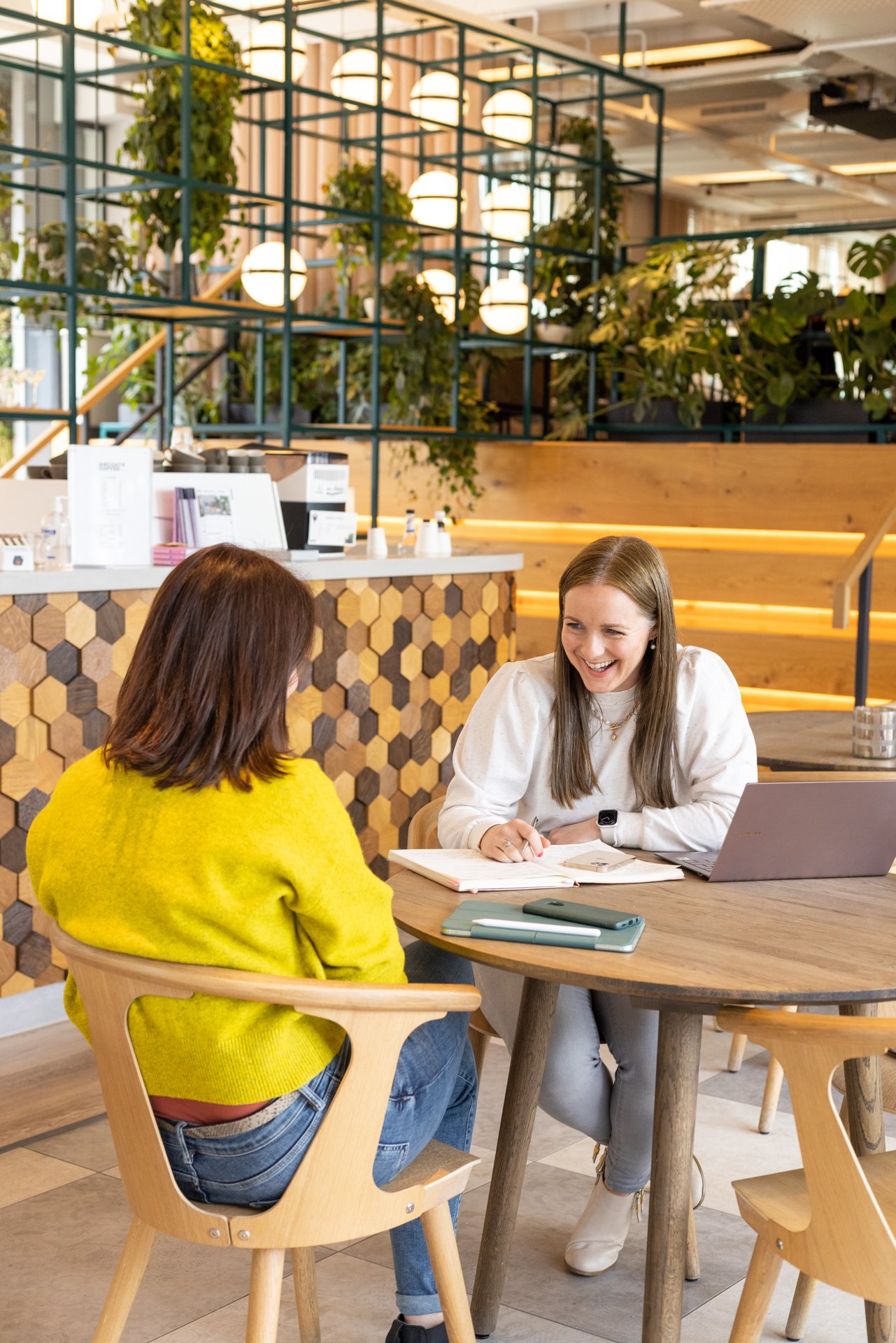Key trends affecting commercial property marketing
The commercial property industry is constantly evolving, and marketing trends are no exception. In order to stay ahead of the curve, it's important to be aware of the latest trends and how they can be applied to your business.
Here are a few key trends that are influencing property marketing in 2023.
Sustainable marketing and net zero credentials
The property market is changing. Businesses are now looking for office space that is more than just a place to work. They want workplaces that are sustainable and considerate of the climate crisis and this is having an impact on the commercial property industry.
With the deadline of going net zero by 2050 businesses are aware that making the transition to net zero is necessary. They are looking at all aspects of their operation and this includes the space they occupy. Occupiers are now demanding sustainable workspace.
Added to this is a desire to attract talent with the best workspace. Millennials and Gen Z are far more sensitive to the climate crisis and employers that have a solid sustainability policy.
Building owners are now marketing the sustainability credentials of their properties as a USP to attract occupiers from NABERS, BREEAM, net zero credentials to energy efficiency, renewable energy generation, biodiversity net gain and supporting nature recovery, and waste management.
Amenity, wellbeing and tech-enabled buildings
The commercial property industry is in the midst of a major shift towards amenity and well-being. In the competition to attract occupiers, who are seeking to attract the best talent, the added value of building amenities and the well-being offered are a key battleground. Some of the best buildings offer:
Gym facilities and classes
On-site coffee shops
Outdoor space
Bike store facilities
Showers
Customer events and community programmes that encompass business support, social and wellness events, and customer discounts and exclusives are an added value offer that can attract occupiers.
It doesn’t stop at amenities with the WELL Building Standard and Fitwel, wellbeing encompasses air quality, lighting and even the types of materials used in the building.
Prospective customers are also interested in the technology available within the building and how it can enhance the working day. Some of the tech making its way into buildings is:
Smart building management systems
Free WiFi-6 in communal spaces
Fully connected buildings
Smart meter energy monitoring
Customer app
Food ordering service
Smart lift optimisation
Desk and meeting room booking
Occupational sensors
Air quality sensors
Occupant controlled lighting and ventilation
Photovoltaics and renewable energy generation
Touchless access
Air source heat pumps
Virtual tours
Virtual tours are here to stay. They give potential occupiers the chance to view a potential property during desk based research saving valuable time before an in person viewing. There’s a variety of technology available to achieve this whether it’s for an existing property or a development property. Tactics you can consider include:
360s using tools such as Matterport, Giraffe360, Google, CGIs and virtual reality
Videos tours and fly through CGIs
Augmented reality can enhance the traditional show suite a experience
While not widely adopted within the commercial property industry at the moment virtual interior design and space planning software offers a huge opportunity for potential tenants to design and visualise their personalised space before committing to it.
As AI gains more momentum, there could be even more scope to explore different designs as part of the buying journey. Midjourney is one such example of an AI company where the user inputs a prompt of the style, layout, lighting and furniture to receive a fully rendered CGIs.
Vertical format: Video, photo and CGI
For property companies making use of any social media platform in their marketing, vertical format content needs to be thought about as part of the briefing process with any videographer, photographer or studio. In the main, mobile phone social media content consumption favours this format and as such it can give your content more profile within a social media feed than landscape/widescreen formats. The natural home for this is Instagram and TikTok but even on LinkedIn vertical content gives you more screen real estate. The two notable exceptions to this are YouTube and Vimeo.
All too often content is captured in a widescreen format and then cropped at a later date to fit the vertical format. This can compromise the content with funny crops that don’t seem to suit the frame. If the content is primarily going to be used for digital campaigns across social media platforms then a mobile first approach should be taken. If the content has a multipurpose objective such as use on brochures, websites and presentations then be more pragmatic but do think about how it will be used as part of the briefing process.
The trends discussed in this blog are just a few of the many that are shaping the commercial property industry in 2023. Keeping aware of what your competition and what they’re doing to market their properties is a good way to identify trends and differentiate your business and property to attract tenants and customers. But don’t forget first and foremost you need to understand your target audience and what they’re looking for in a commercial property.
If you are looking for some help with a Commercial property marketing project, I have over 20 years of experience across the industry and would love to help.







